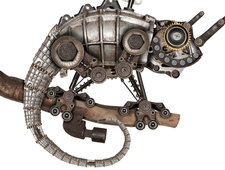Getting Started
Open Hardware – Arduino

© Lead Image © Burmakin Andrey, 123RF.com
Whether you are building your own device or customizing one, Arduino technology often functions as the foundation for your open hardware project. Here's how to get started with Arduino products.
Arduino single-board microcontrollers [1] were originally intended for educational and do-it-yourself projects. Increasingly, though, they are a foundation for Internet of Things (IoT) projects and open hardware. Sometimes, they are used only for prototyping, but, just as often today, they are found in commercial products ranging from keyboards to prosthetics. If you are involved in open hardware, knowing how to work with Arduino products is quickly becoming essential.
Arduino boards are influential for several reasons. To start, while limited in scope, Arduino boards are powerful enough for many dedicated purposes. If they are not, chaining them or using extension hardware known as shields can easily extend their usability. Just as importantly, Arduino boards can interact with Linux, OS X, or Windows, as well as other single-board microcontrollers like the Raspberry Pi.
Moreover, Arduino offers widespread support for all user levels. This support includes its own IDE and a programming language that is a variant of C, a Creative Commons license, and a community of thousands. With this support, users can begin to work without experience in electronics or programming. At the same time, Arduino is flexible enough to meet the needs of experts as well.
[...]
Buy this article as PDF
(incl. VAT)
